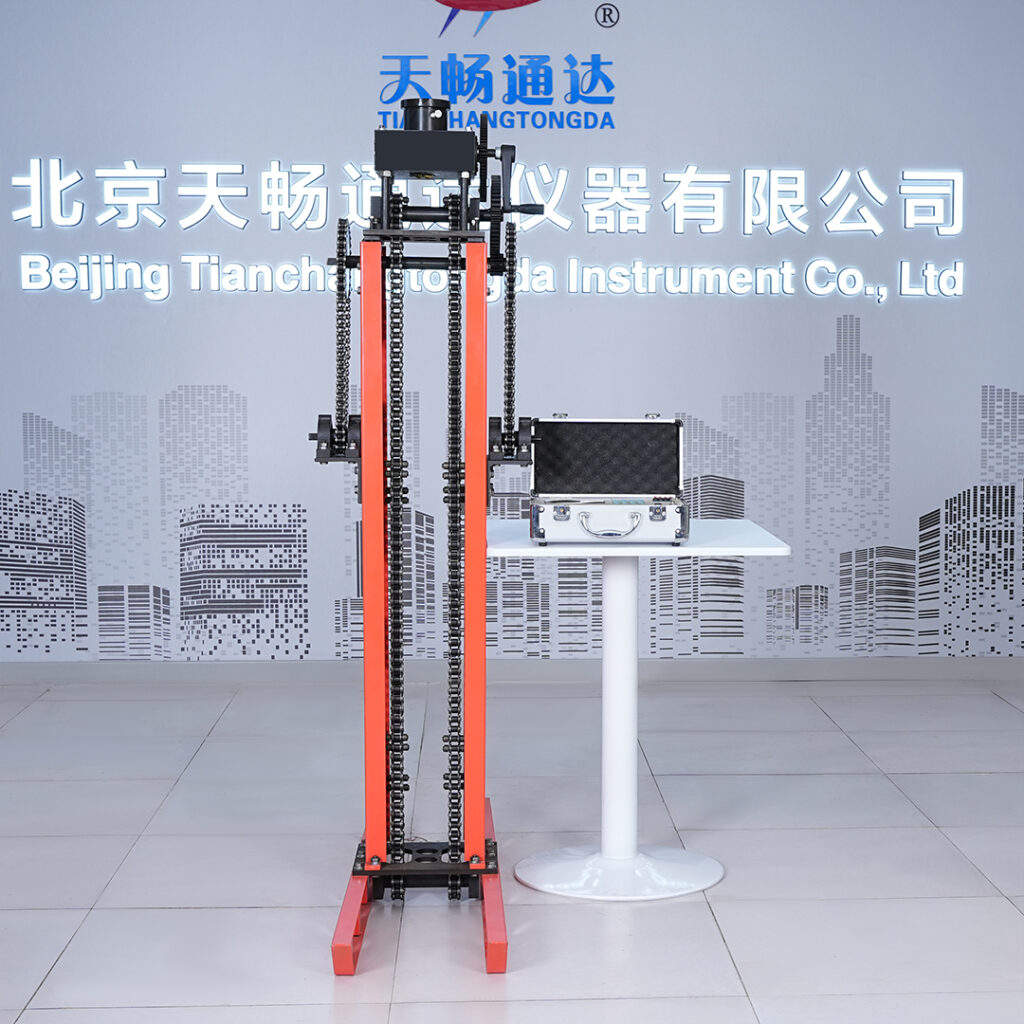Static Cone Penetrometer Test Procedure is a widely used method in geotechnical engineering for conducting reliable in-situ soil strength testing. From foundation assessments to soil strength profiling, this device plays a critical role in providing accurate, real-time data without requiring laboratory analysis. Whether you are a civil engineer, contractor, or soil investigation specialist, understanding how to properly conduct static cone penetration tests (SCPT) is crucial for obtaining reliable results and minimizing risks in construction and infrastructure projects.
This article will walk you through the complete test procedure, explain how the device works, highlight its applications, and introduce a powerful model that meets the latest demands for precision and usability.
🔍 What Is a Static Cone Penetrometer?
A Static Cone Penetrometer is an in-situ soil testing instrument that determines soil resistance by slowly and continuously pushing a cone-tipped rod into the ground. Unlike dynamic methods (which use impact or vibration), static penetration provides consistent and precise resistance measurements, making it ideal for soft to medium soil conditions.
The test evaluates:
- Cone resistance (qc)
- Sleeve friction (fs)
- Friction ratio (Rf)
- Stratigraphic layering and consistency
These values help engineers assess bearing capacity, soil compaction, and suitability for construction without requiring core samples or excavation.
🛠️ Standard Static Cone Penetrometer Test Procedure
Conducting a proper test involves a sequence of steps to ensure data accuracy and repeatability:
1. Preparation
- Position the cone penetrometer vertically over the test site.
- Calibrate the equipment and confirm the zero point reading on the display screen.
2. Cone Insertion
- Slowly insert the cone at a constant rate of 10 mm/s.
- Record depth intervals (usually every 10 cm) using built-in sensors.
- Measure penetration resistance and friction via electronic sensors or manual readings.
3. Data Logging
- Each test interval is automatically logged in real-time.
- Operators can select continuous display of up to 10 depth points simultaneously.
- Total test duration ranges from 1 to 36 hours depending on site conditions and depth requirements.
4. Completion
- Extract the rod and compile data.
- Analyze results using computer software or display modules.
✅ For more details about our precision Static Cone Penetrometer, click here to view full specifications.
🧩 Highlighted Features of Our Static Cone Penetrometer
Our static cone penetrometer is engineered for high accuracy, full modularity, and field adaptability. Based on the specifications you provided, here are the verified key features of the model:
✅ Structural Design
- Fully enclosed and sealed host design for enhanced durability.
- Compact host unit size: 208×148×58mm.
- Light overall weight: only 0.5kg, ideal for field mobility.
✅ Precision & Performance
- Resolution: 1/20000
- Accuracy: ±0.1%
- A/D conversion is independent for each channel, ensuring no cross interference.
- Depth interval: 10 cm
- Recording time: adjustable from 1 to 36 hours
- Sampling time interval: 10 ms
✅ Probe Compatibility
Supports a wide range of probes including:
- Double bridge touch cone probes
- Pore pressure cone probes
- Cross plate probes
✅ Display & Interface
- 240×128 dot matrix screen with Chinese-English display
- Simultaneous test result and depth display
- Data ports: RS232 + USB direct communication
✅ Battery Performance
- Battery life: ≥50 hours (rechargeable over 400 cycles)
- Configurable power saving mode
- Built-in memory supports ≥10 test records
📲 Interested in specifications or pricing? Contact us via WhatsApp for quick answers.
🌎 Application Scenarios in Real-World Projects
The Static Cone Penetrometer is ideal for the following testing contexts:
- 📍 Foundation investigations in residential or commercial buildings
- 📍 Roadway and highway base assessments
- 📍 Bridge abutment soil profiling
- 📍 Flood embankment or levee analysis
- 📍 Agricultural soil strength testing
Because the test provides immediate soil stratigraphy and mechanical resistance data, it is widely used in both pre-construction and routine geotechnical surveying tasks.
❓ Common Questions About Static Cone Penetrometer Testing
Q1: Can this device work on different soil types?
Yes. It is designed for clay, silt, loose sand, and other fine-grained soils. For rocky layers, you may need dynamic testing.
Q2: How do I retrieve and manage test data?
Data can be exported via USB or RS232. The device also displays real-time data during testing, and internal memory stores up to 10 sets of test records.
Q3: How many depth readings can it display simultaneously?
Up to 10 depth points can be viewed at once on-screen.
💬 Have more technical questions? Talk to us directly on WhatsApp for support.
✅ Why Choose Our Static Cone Penetrometer?
- 🔒 Real accuracy: ±0.1% precision meets professional testing standards.
- 🔄 Multi-probe support: perfect for various project needs.
- 🔋 Long battery life: Up to 50 hours, field-proven reliability.
- 🛠️ Configurable and user-friendly interface, suitable for both novice and expert users.
- 💰 Efficient modular design reduces unnecessary costs.
🌐 Learn more about our full range of testing instruments on our official homepage.
📞 Ready to Order or Need a Quote?
We’re committed to helping you choose the right testing equipment for your specific geotechnical needs.
✅ Explore full product details: Static Cone Penetrometer – Product Page
✅ Speak to a sales expert instantly: Chat on WhatsApp
✅ Visit our homepage for more: testequiphub.com
Quality soil testing begins with reliable equipment.
Choose precision. Choose professionalism. Choose our Static Cone Penetrometer.
